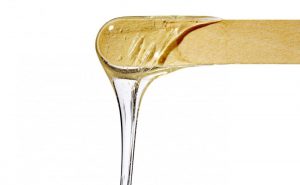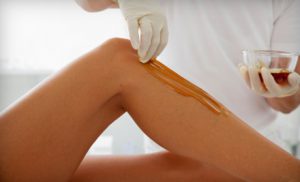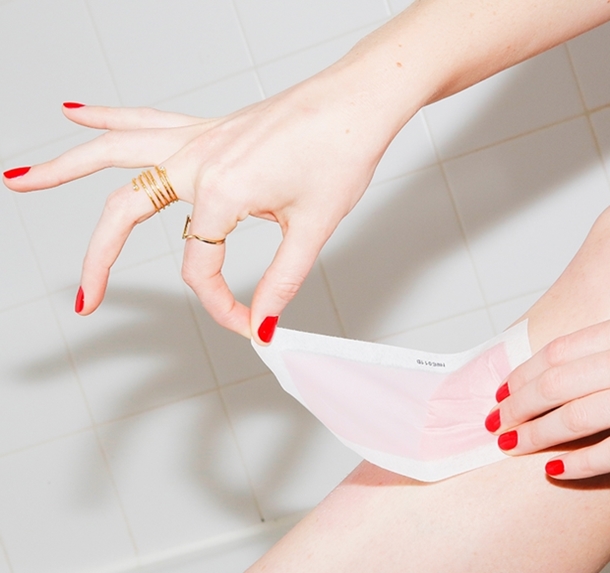
By Lilliane Caron, owner and director of Caronlab.
The beauty industry is an amazing world to be a part of. It’s forever changing and expanding rapidly. Trends come and go and products that were once revolutionary now seem so mundane, as if there was never a time we didn’t have these kind of luxuries at our fingertips.
Hair removal may not be considered the most glamourous aspect of the beauty world. Most people prefer to talk about makeup tips, or which fake tan gives you a flawless finish.
However, waxing is a multi-million dollar industry and is the bread and butter of most salons. The ease of waxing today is often taken for granted.
Waxing has been around for centuries, and while it is not a revolutionary concept, the products and formulations that are now available are revolutionary, and should be recognised on just how far they have come.
The transformation of waxes and other hair removal techniques over the past few decades is amazing and we should all take a minute to thank our lucky stars we have never had to use a sharp rock or pure beeswax straight from the hive to remove unwanted hair!
The Egyptians are known for the being the trendsetters for many beauty rituals. The women of ancient Egypt used to remove all of the hair on their bodies — some including the hair on their heads!

While hair removal these days is considered part of any beauty regime purely for aesthetic reasons, it first originated in Middle Eastern countries in order to reduce parasites, fleas, lice and body odour, which were all very common when living in such hot conditions.
It has long been tradition that even the men are completely hairless. With few options, they made waxes out of sugar and beeswax and used tweezers made from seashells (can you believe!?).
Sugaring is an early form of waxing and is still popular in Arabic countries today. It uses an all-natural paste or gel made from food-derived ingredients like sugar, water and lemon juice to remove the hair.
The toffee-like substance is kneaded into the skin repeatedly, removing the hair as it goes. While these homemade waxes were derived from natural ingredients, they would actually have been quiet harsh on the skin and caused irritation, redness, itchiness and bumps — reactions that can quiet easily be prevented or treated in this day and age.
During the days of the Roman Empire, the lack of body hair was also considered a sign of wealth and class, but even the wealthiest people in this period could only use what limited resources were available: generally tree sap, razors made from flints and sharp stones to scrape the hair.
In the 1930s the first commercial waxes were manufactured in France to be sold to the public. As time went by, waxes became more available to the public and quickly became the choice of woman all over the world for removing unwanted hair — it was quick, convenient and effective. Men at this stage still opted for the razor but woman rejoiced in a method that gave them longer-lasting results.
In the last 50 years or so, the waxing industry has evolved immensely. By the 60s there were both strip and hard waxes on the market, however the formulas and ingredients used to produce the waxes were inferior to those on the market today. While the idea had been marketed, the waxing industry was far from perfect and had a long way to grow.
Having been in the waxing business for over 30 years, I have witnessed the growth of this industry first hand. In 1979 I was working long hours in my own salon and became frustrated
with the expensive, inferior, difficult-to-use waxes on the market. The strip wax crystallised and the hard wax went brittle on the skin.
Not only were they poor quality, but we had to sift the hair out of the wax and reuse it. Imagine putting your used wax in a fish and chip fryer every night and sifting out the hair; because that’s what we were essentially doing!

I was sick and tired of a system that was desperate for a makeover, so I set about formulating my own range of hard and strip waxes. In 2000, the world’s first white wax was formulated by my company in response to the growing trend in Brazilian waxing which was rapidly making a comeback.
The Brazilian has been around since the early BCs, and the trend has come and gone countless times (history tells us that Catherine de Medici, the Queen of France in the mid-1500s, actually banned the removal of all pubic hair).
This revolutionary wax gripped to the hair without pulling the skin, didn’t crack or go brittle and delivered unrivalled results. To this day, it is still Australia’s number one selling XXX wax.
The waxing industry is currently thriving in both a retail and salon environment. The idea of having smooth, silky hair-free skin is no longer considered a luxury; it is the norm — particularly for women. It is accessible to everyone in one way
or another, whether they are paying a professional or doing it in the comfort of their own home.
With convenience in mind for both beauty therapists and at-home users, there are perfectly sized hard wax pallets which mean there’s now no need to smash up hard wax with hammers.
There are water soluble, dripless, microwavable, as well as powdered waxes on the market. There are waxes that contain titanium dioxide and other ingredients that decrease redness and irritation, a side effect that had no solution centuries ago.
This kind of innovation makes me excited for what the future of waxing holds. In another 30 years’ time, who knows what kind of waxes we will have and what they will be capable of. It’s funny to think how time goes by, and all we can do is wait and see where this ever-changing industry takes us next.
Related
- Instagram’s new feature changes the online booking landscape
- Gold Coast salon starts new nail trend
- How to create a space your clients love visiting
- Renowned organic skincare brand now available to be stocked in salons
- Beauty salons to be audited as part of new Fair Work campaign

